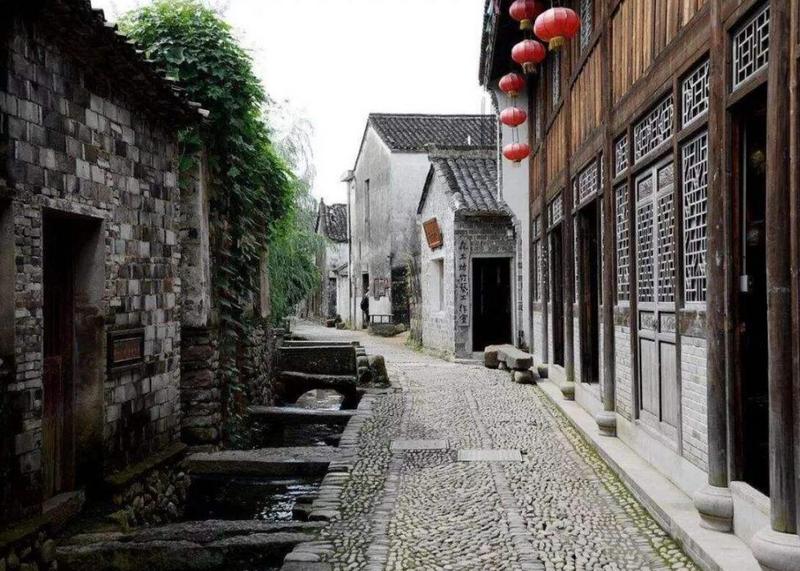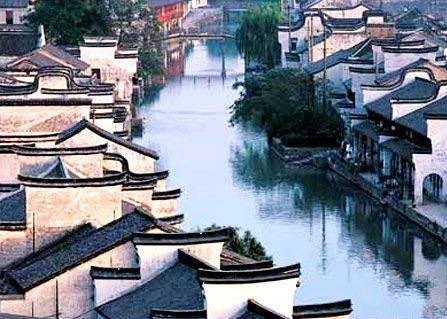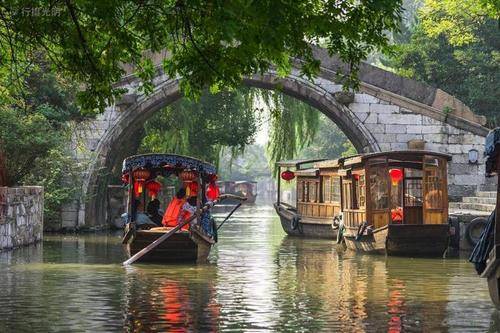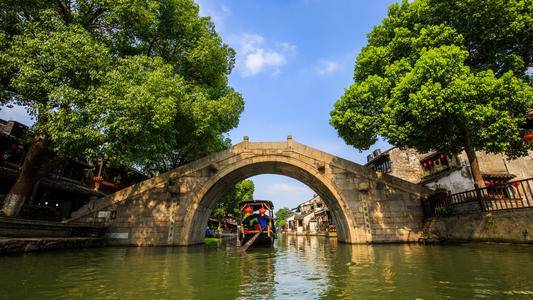Anchang Cured Meat - Rich New Year Flavor
Anchang Cured Meat - Rich New Year Flavor. Shaoxing Anchang is a famous ancient water town in Jiangnan with a history of over a thousand years. The three-mile old street paved with stone slabs is lined with shops, connected by two corridors. Groups of people wearing 'felt hats' walk around, with the tunes of community opera floating in the air. Under the uniquely shaped stone bridges, black awning boats shuttle back and forth. The water is deep green and calm, like aged wine, rippling with memories and filled with a sense of nostalgia.
Misty Rain Zhouzhuang—Dream Back to Jiangnan
Above there is heaven, below there are Suzhou and Hangzhou, and in between, there is Zhouzhuang. Walking into Zhouzhuang, stepping into the ancient town's old residences and courtyards, one truly feels that Zhouzhuang is indeed 900 years old. The nearly thousand-year history and cultural accumulation, the simple and honest folk customs, and the inadvertent display of the rich cultural heritage of the Jiangnan water town, all exude a sense of ancient elegance and artistic quality.
Elegant Nanxun - Subtle Fragrance
The ancient water town has a calm and serene atmosphere. Among the many ancient towns, Nanxun is beautiful but not particularly outstanding. However, it is less crowded and easier to get close to. The subtle fragrance of wintersweet flowers is now in season. Every year at this time, the branches are lush, and the garden is filled with a cold fragrance. Wintersweet flowers come in red and white cores, each with its own distinct scent.
Luzhi Ancient Town—Melodious and Graceful
In Luzhi Ancient Town, there are small rivers both in front of and behind the houses. Some say this is because six rivers flow through the town: three horizontally and three vertically. These three horizontal and three vertical waterways intertwine to form a character that looks like '用' (use), and along one side of the town flows the Wusong River, creating the character '甪' (Luzhi). Each stroke represents a small river in the town. Since water is the eye of the ancient town, the bridge is like a subtle eyebrow above it. It is said that at its peak, Luzhi had 72 and a half bridges, and the density of its bridges even exceeds that of the famous water city, Venice.
Qiantong Ancient Town - Legacy of Time
Visiting Qiantong might overturn the preconceived image of Jiangnan ancient towns in your mind—like Zhouzhuang, Wuzhen, and Xitang, which are built along rivers with small bridges and long corridors. However, the most striking feature of Qiantong is still water. The ancestors of the Tong family naturally understood the importance of water for the family's prosperity. At the beginning of the village's construction, they diverted the distant Baixi River into the town. The creek, locally referred to as a 'gou,' winds around the houses following the 'hui' character-shaped nine-square grid layout, creating the unique scenery of 'every household has flowing water.'
Watertown Xitang - Rippling Green Waves
Watertown Xitang, with its crisscrossing rivers and rippling green waves, presents a picturesque scene in the morning with small bridges, flowing water, and mist like gauze. In the evening, the setting sun casts a slanting light, and flat fishing boats dot the water, depicting a typical Jiangnan watertown. Xitang has a unique charm and elegance that is both pure and refined. You can join the locals on a boat to fish and enjoy the transcendent pleasure of a fisherman's life. As night falls, you can take a boat ride on the river, place a pot of wine and a couple of dishes, and chat with friends. Outside the cabin, a woman in a blue cloth dress rows the boat, singing softly with a melodious and lingering voice, evoking a sense of nostalgia.
Tongli Time - Traveling Through Millennia
'One Garden, Two Halls, Three Bridges' are the most famous attractions in Tongli. 'One Garden' refers to the Retreat and Reflection Garden, which is listed as a World Cultural Heritage site. The ancient saying goes, 'Reflect when near, correct when retreating,' and the garden owner Lan Sheng named the garden with the meaning of correction. The garden abandons the grand and flamboyant vertical design, adopting a highly concealed horizontal design. The house, courtyard, and garden are arranged in an orderly manner, making the nine-acre garden restrained and elegant, compact yet ingenious.

















